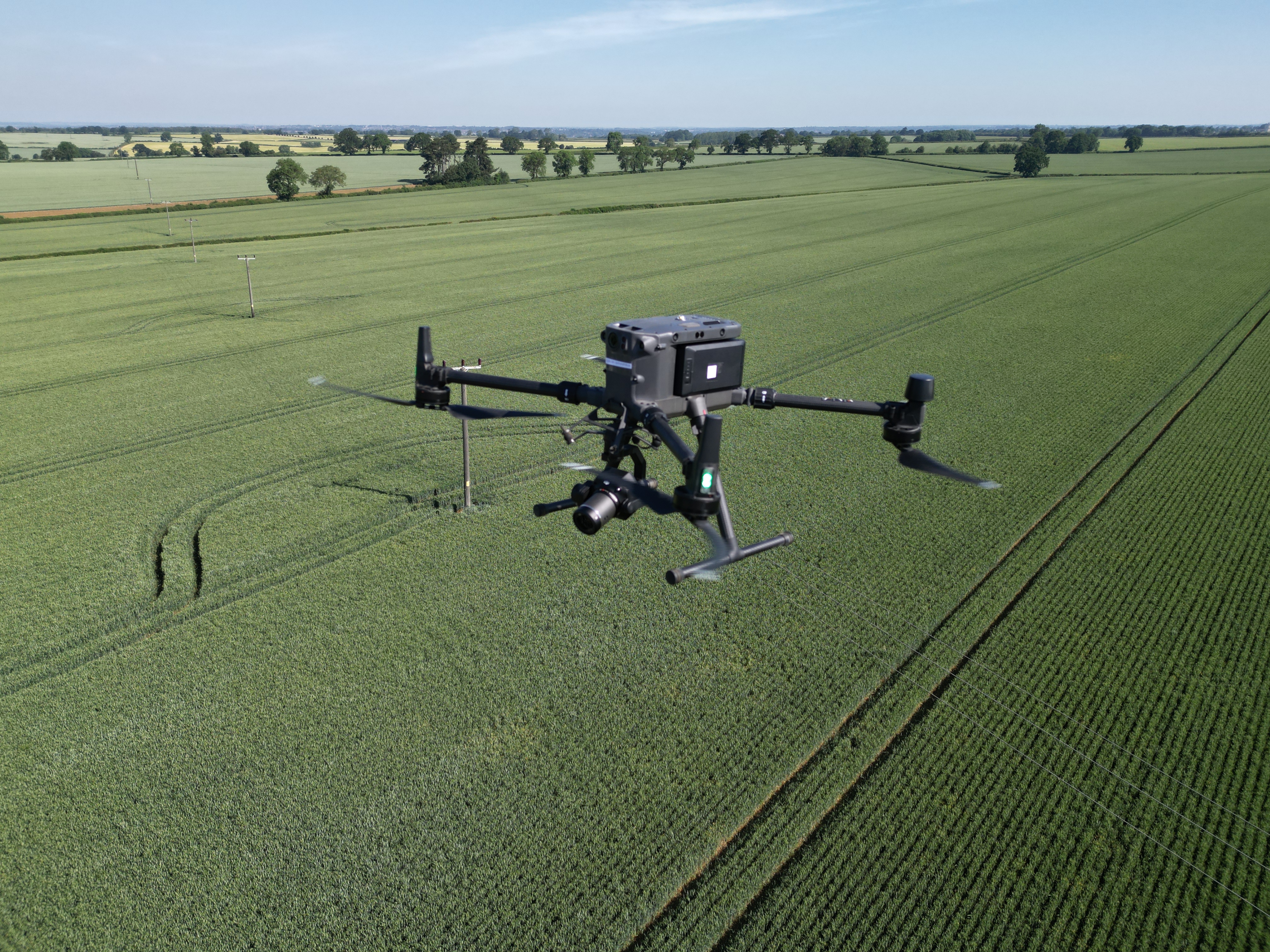UAS drone surveys
Carter Jonas’s measured survey team has recently expanded its Unmanned Air System (Drone) survey services. This new in-house drone survey capability now allows us to offer the following distinct types of survey.

01: Thermal drone surveys
Energy efficiency of buildings
The information captured during a thermal drone survey can show:
Degradation of renewable energy assets
Non-Visual Leak detection
Thermal drone surveys can identify where heat is escaping from buildings, so you know what energy efficiency measures can be taken to reduce the cost of heating your property and ensure compliance with MEES (Minimum Energy Efficiency Standard) regulations. They may also determine the reason for poor efficiency, be it air and moisture intrusion, damaged, missing or wet insulation or the de-lamination or de-bonding of building rendering.
Wear and tear of renewable energy assets can cause increased friction between components, which creates heat. Thermal drone surveys highlight this heat creation, thereby identifying assets which need to be serviced, fixed, or replaced.
Non-Visual Leak
detection
Thermal drone surveys can demonstrate leaks around utility assets even when the leak is below the surface. The change in temperature around the asset highlights the extent of the leak. As this is captured from the air we can cover a greater area, more quickly than traditional handheld scanners, as well as being able to monitor hard to reach or hazardous areas.
02: Aerial laser scanning surveys





01: 3D model of vegetation
02: LIDAR model of vegetation
03: Elevation colour
Thermal drone surveys allow you to make informed decisions on how to reduce the cost of running your property and assets.
LIDAR (Light Detection and Ranging) surveys provide a technically accurate record of the buildings or terrain in a more consistent, comprehensive, and efficient way. This can be used for:
Penetration of vegetation
Modelling buildings and infrastructure
LIDAR surveys can penetrate vegetation, meaning that even in areas covered in woodland or dense undergrowth, accurate records of the terrain below can be captured. When used with our terrestrial laser scanning data we can capture the full extent and size of the tree stem, canopy size and height; supporting calculation of above ground biomass and carbon calculations.
3D models of buildings and other assets, with highly accurate dimensions and locations, allow for informed decision making on future improvements and developments. These can be rendered with imagery collected by the same sensor or combined with the high-resolution camera used for our imaging surveys.
Creating digital
twins
LIDAR surveys capture an extraordinarily rich, comprehensive point cloud data set, and can form the basis for 3D models for developing the foundations of Digital Twins. When combined with our terrestrial laser scanning capability, we can quickly and easily map and model both the inside and outside of your property, from residential houses or commercial units to supporting Urban planning and regeneration.

03: Imaging surveys

Drone imaging surveys can quickly and accurately capture a visual record of the condition and appearance of buildings. These can be used for:
Condition surveys
Drone imaging surveys are a safer and more affordable method to capture photos of hard-to-reach parts of buildings, including roofs, chimney stacks, pylons and bridges, without the need to hire and use expensive access equipment, such as MEWP, boats or specialised harness and rope work.
Virtual tourism
The data captured using a drone imaging survey can be used to create a virtual tour of a building or estate, making parts of them more accessible, especially when used alongside other technology such as augmented or mixed reality. Capturing the building condition allows you to digitally preserve the building for future generations.
Imaging survey data can be combined with LIDAR data to create a visually representative, and dimensionally accurate and precise model of a property or asset combined with the imagery collected from the drone. These mesh models can be used in wide variety of different scenarios including:
• Simple “as built” models
• Estate wide visualisation.
• To support planning process by conducting Line of
Sight or shadow analysis.
• The basis for creating backdrops and environments
for computer game development
• 3D visualisation for architectural or
masterplanning visualisations.
"Capturing the building condition allows you to digitally preserve the building for future generations."
Inspection and progress monitoring
High res, greater detail and more up to date than Google imagery. They provide managers, contractors, architects and surveyors with data to better track a project’s progress, manage resources, reduce downtime, and keep projects on schedule and within budget. Images can be used to record progress, for management reporting or for marketing purposes. Progress monitoring allows a client to verify the ‘as built’ project status against design models using 2D and 3D data which is created using specialised software. The output provides accurate elevation data, contour lines, and 3D modelling, plus the ability to export the data to BIM and CAD software.
Topographical Surveys and
Volumetric measurement
Utilising the latest survey drones equipped with real time positioning, our drones can capture images and data, accurate to a few millimetres, enabling Topographical surveys to be undertaken far quicker than by more conventional methods.
Video 1 of 2
Video 2 of 2

Click to switch between videos
Viewing of hazardous area
Drones can safely fly over hard to reach areas, such as forests, critical infrastructure, contaminated sites and water features, without the need for a surveyor to enter the area.


Get in touch
EMAIL ME

Simon Nigh
Partner, Head of Geospatial
07920 207297
EMAIL ME

Mark Kieras
Partner, Head of Measured Survey
07799 771 762


Capture and inspect hard to reach places
Utilising survey drones to capture data accurate to a few millimetres
3D model of Ragley Hall





04: 3D model of Ragley Hall